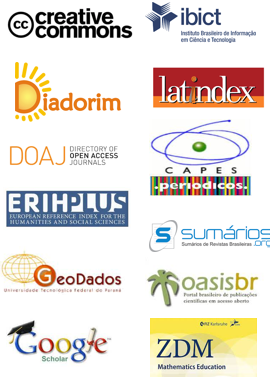Maestros en Formación Leen e Interpretan Gráficos Estadísticos
DOI:
https://doi.org/10.17921/2176-5634.2020v13n4p374-384Resumo
Resumen
El objetivo del presente trabajo es analizar cómo maestros en formación leen e interpretan gráficos estadísticos. Los gráficos estadísticos son uno de los instrumentos que se utiliza para hacer llegar información de diversos temas a los ciudadanos. Los futuros maestros tienen una doble necesidad de leer e interpretar gráficos estadísticos, por su actuación como ciudadano común y como docente por la responsabilidad de enseñarlos en la escuela. A partir de una pregunta de PISA se construyó un cuestionario de cuatro preguntas. El cuestionario fue respondido por 77 maestros en formación que ya habían cursado la asignatura de estadística de su carrera. Las respuestas fueron analizadas y clasificadas, considerando la respuesta proporcionada y el argumento utilizado para justificarla. Los resultados indican que los docentes en formación logran un mejor rendimiento en la lectura literal de los datos del gráfico y su interpretación podría estar sesgadas por posiciones personales. Aunque cursaron estadística con profesores diferentes, los grupos se comportan de manera homogénea respecto a las respuestas del cuestionario. Eso puede significar que ellos fueron expuestos a estrategias similares de enseñanza y evaluación de los contenidos de gráficos estadísticos. Probablemente sea necesaria revisar esas estrategias.
Palabras-clave: Gráficos Estadísticos. Maestros en Formación. Representación de Datos. Alfabetización Estadística. Matemáticas Educación Primaria.
Abstract
The objective of this research was to analyze how prospective teachers read and interpret statistical graphs. Statistical graphics are one of the instruments used to deliver information on various topics to citizens. Future teachers have a double need to read and interpret statistical graphs, for their performance as a common citizen and as a teacher for the responsibility of teaching them at school. From one question of PISA evaluation a poll with four questions was built. The questionnaire was answered by 77 prospective teachers who had already completed the statistics course at undergraduate course. The answers were analyzed and categorized considering the answer provided and the argument they used to justify it. The results indicate that future teachers achieve a better performance in literal reading of the data in graphs as their interpretation could be biased by personal believes. Although they have studied statistics with different teachers, the groups behave homogeneously with respect to the questionnaire responses. This may mean that they were exposed to similar strategies for teaching and evaluating the contents of statistical graphics. These strategies will might need to be reviewed.
Keywords: Statistical Graphs. Prospective Teachers. Data Representation. Statistical Literacy. Mathematics Primary Education.


